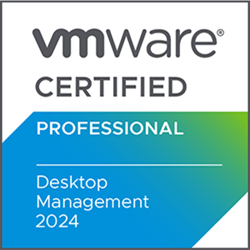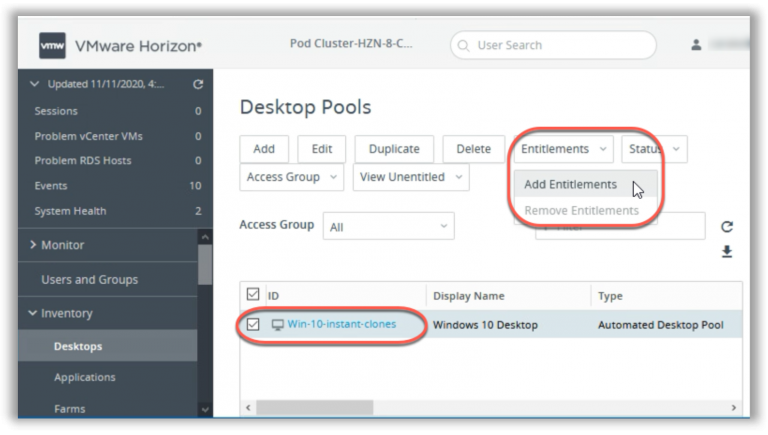VMware Horizon: Deploy and Manage [V8.8]

The VMware Horizon: Deploy and Manage [V8.8] course is designed to provide participants with an in-depth understanding of the VMware Horizon solution, which enables them to deploy and manage virtual desktops and applications in a centralized environment. During the course, participants will be introduced to the architecture and functionality of VMware Horizon and learn how to translate customer requirements into use case attributes for virtual desktop and application infrastructure. Participants will also study vSphere for VMware Horizon, learn how to create Windows and Linux desktops, and configure and manage desktop pools. The course also covers VMware Horizon client options, creating and managing Instant-Clone desktop pools and RDS desktop and application pools. Participants will have the opportunity to monitor VMware Horizon, learn about Connection Server, Horizon protocols, and the implementation of graphics in Horizon. The course also covers connection security, both at the network and authentication levels, and Horizon scalability. Finally, the course introduces participants to Horizon Cloud and Universal Broker, as well as Workspace ONE Access and virtual application management. Through this comprehensive course, participants will gain the skills needed to successfully implement and manage VMware Horizon solutions. The course helps prepare for the VMware Certified Professional Desktop Management 2024 (VCP-DTM 2024) Certification exam .
Course Objectives
The following is a summary of the main objectives of the VMware Horizon: Deploy and Manage [V8.8] Course :
- Gain in-depth knowledge of the VMware Horizon solution, including its architecture and capabilities.
- Learn to create and manage Windows and Linux desktops in VMware Horizon environments.
- Understand and configure VMware Horizon client options, including Instant-Clone and RDS desktop pools.
- Monitor and manage connection security in VMware Horizon.
- Introduce attendees to Horizon Cloud, Universal Broker, and virtual application management with Workspace ONE Access.
- Understand VMware Horizon architecture: Gain insights into its structure and features.
- Manage desktop environments: Create and oversee Windows and Linux desktops.
- Explore Horizon Cloud and Workspace ONE: Learn about virtual application management and the Universal Broker.
Course Certification
This course helps you prepare to take the:
VMware Certified Professional Desktop Management Exam 2024 (VCP-DTM 2024)
Course Outline
Module 1: Course Introduction
- Introductions and course logistics
- Course objectives
Module 2: Introduction to VMware Horizon
- Recognize the features and benefits of Horizon
- Describe the conceptual and logical architecture of Horizon
Module 3: Introduction to Use Case
- Convert customer requirements to use-case attributes
- Define a use case for your virtual desktop and application infrastructure
Module 4: vSphere for VMware Horizon
- Explain basic virtualization concepts
- Use VMware vSphere® Client™ to access your VMware vCenter System and VMware ESXi™ hosts
- Create a Windows virtual machine using vSphere
Module 5: Create Windows Desktops
- Outline the steps to install Horizon Agent on Windows virtual machines
- Install Horizon Agent on a Windows virtual Machine
- Optimize and prepare Windows virtual machines to set up Horizon desktop VMs
Module 6: Create Linux Desktops
- Create a Linux VM for Horizon
- Install Horizon Agent on a Linux virtual machine
- Optimize and prepare Linux virtual machines to set up Horizon desktop VMs
Module 7: Creating and Managing Desktop Pools
- Identify the steps to set up a template for desktop pool deployment
- List the steps to add desktops to the VMware Horizon® Connection Server™ inventory
- Compare dedicated-assignment and floating-assignment pools
- Outline the steps to create an automated pool
- Define user entitlement
- Explain the hierarchy of global, pool-level, and user-level policies
Module 8: VMware Horizon Client Options
- Describe the different clients and their benefits
- Access the Horizon desktop using various Horizon clients and HTML
- Configure integrated printing, USB redirection, and the shared folders option
- Configure session collaboration and media optimization for Microsoft Teams
Module 9: Creating and Managing Instant-Clone Desktop Pools
- List the advantages of instant clones
- Explain the provisioning technology used for instant clone desktop pools
- Set up an automated pool of instant clones
- Push updated images to instant clone desktop pools
Module 10: Creating RDS Desktop and Application Pools
- Explain the difference between an RDS desktop pool and an automated pool
- Compare and contrast an RDS session host pool, a farm, and an application pool
- Create an RDS desktop pool and an application pool
- Access RDS desktops and application from Horizon Client
- Use the instant clone technology to automate the build-out of Remote Desktop Session Host farms
- Configure load-balancing for RDSHs on a farm
Module 11: Monitoring VMware Horizon
- Monitor the status of the Horizon components using the Horizon Administrator console dashboard
- Monitor desktop sessions using the HelpDesk tool
- Monitor the performance of the remote desktop using the Horizon Performance Tracker
Module 12: Horizon Connection Server
- Recognize the VMware Horizon reference architecture
- Identify the Horizon Connection Server supported features
- Identify the recommended system requirements for Horizon Connection Server
- Configure the Horizon event database
- Outline the steps for the initial configuration of Horizon Connection Server
- Discuss the AD LDS database as a critical component of the Horizon Connection Server installation
Module 13: Horizon Protocols
- Compare the remote display protocols that are available in VMware Horizon
- Describe the BLAST Display Protocol Codecs
- Summarize the BLAST Codec options
- List the ideal applications for each BLAST codec
- Describe the BLAST and PCoIP ADMX GPO common configurations
Module 14: Graphics in Horizon
- Describe the 3D rendering options available in Horizon 8
- Compare vSGA and vDGA
- List the steps to configure graphics cards for use in a Horizon environment
Module 15: Securing Connections: Network
- Compare tunnels and direct connections for client access to desktops
- Discuss the benefits of using Unified Access Gateway
- List the Unified Access Gateway firewall rules
- Configure TLS certificates in Horizon
Module 16: Securing Connections: Authentication
- Compare the authentication options that Horizon Connection Server supports
- Restrict access to the Horizon remote desktops using restricted entitlements
- Describe the smart card authentication methods that Horizon Connection Server supports
- Explain the purpose of permissions, roles, and privileges in VMware Horizon
- Create custom roles
Module 17: Horizon Module
- Describe the purpose of a replica connection server
- Explain how multiple Horizon Connection Server instances in a pod maintain synchronization
- List the steps to configure graphics cards for use in a Horizon environment
- Configure a load balancer for use in a Horizon environment
- Explain Horizon Cloud Pod Architecture LDAP replication
- Explain Horizon Cloud Pod Architecture scalability options
Module 18: Horizon Cloud and Universal Broker
- Recognize the features and benefits of Horizon Cloud Service
- Use Universal broker to connect to a Horizon Cloud instance
- Configure and pair the Horizon Cloud Connector appliance with Horizon Connection Server
Module 19: Workspace ONE Access and Virtual Application Management
- Recognize the features and benefits of Workspace ONE Access
- Explain identity management in Workspace ONE Access
- Explain access management in Workspace ONE Access
- Describe the requirements to install and configure True SSO in a Horizon environment
- Describe the Workspace ONE Access directory integration
- Deploy virtual applications with Workspace services
Course Mode
Instructor-Led Remote Live Classroom Training;
Trainers
Trainers are VMware Official Instructors and certified in other IT technologies, with years of hands-on experience in the industry and in Training.
Lab Topology
For all types of delivery, the Trainee can access real Cisco equipment and systems in our laboratories or directly at the Cisco data centers remotely 24 hours a day. Each participant has access to implement the various configurations thus having a practical and immediate feedback of the theoretical concepts.
Here are some VMware vSphere Labs topologies available:

Course Details
Course Prerequisites
- Attendance at the VMware VCP-DCV Course is recommended .
Course Duration
Intensive duration 5 days
Course Frequency
Course Duration: 5 days (9.00 to 17.00) - Ask for other types of attendance.
Course Date
- VMware Horizon Course: Deploy and Manage (Intensive Formula) – On request – 09:00 – 17:00
Steps to Enroll
Registration takes place by asking to be contacted from the following link, or by contacting the office at the international number +355 45 301 313 or by sending a request to the email info@hadartraining.com


